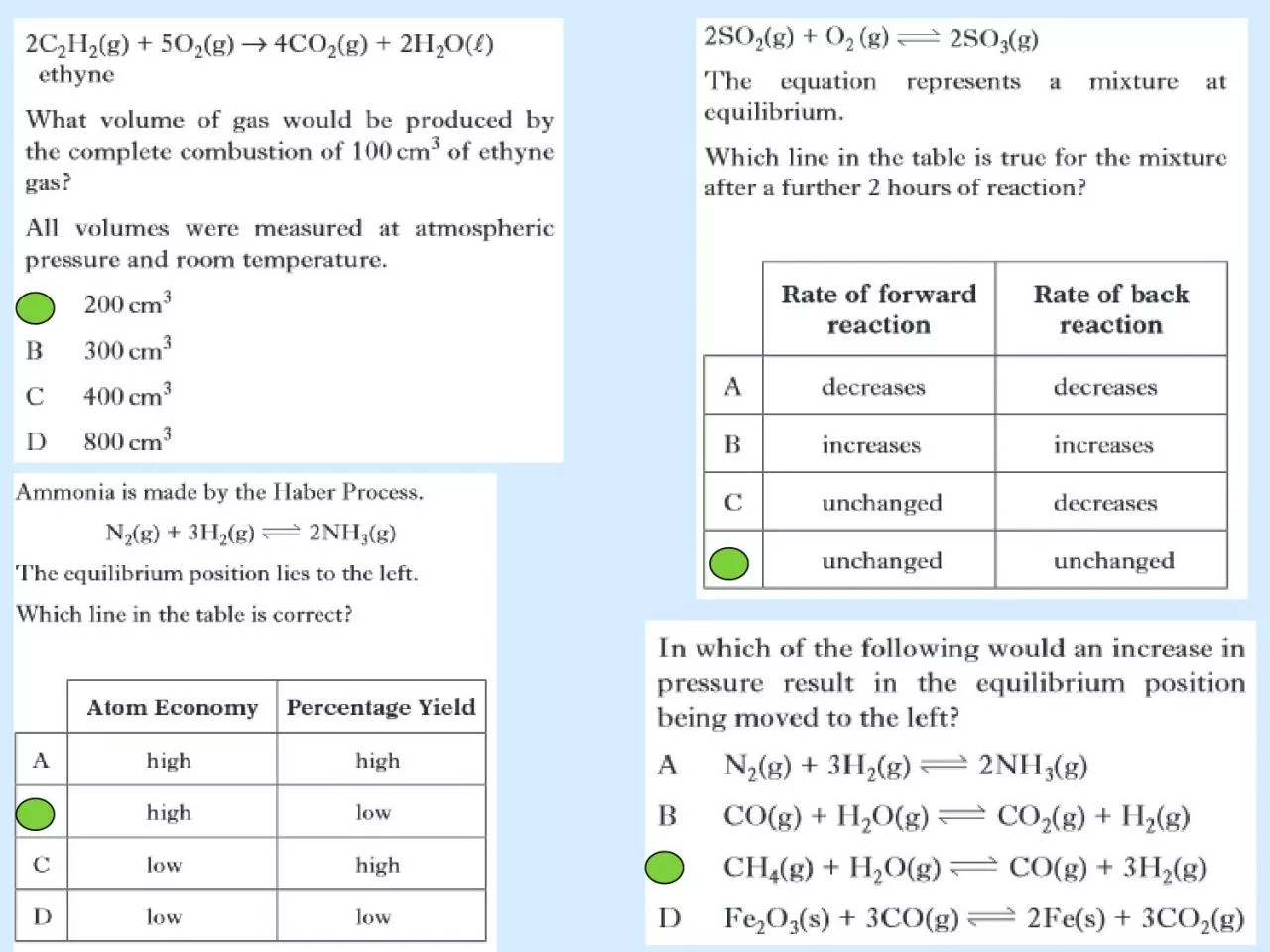

Learn about the characteristic properties of fats and oils and study how they are formed by a condensation reaction of glycerol with fatty acids Fats in the Diet Fats provide more energy per gram ID: 921361
Download Presentation The PPT/PDF document "a) Edible fats and oils Learning intenti..." is the property of its rightful owner. Permission is granted to download and print the materials on this web site for personal, non-commercial use only, and to display it on your personal computer provided you do not modify the materials and that you retain all copyright notices contained in the materials. By downloading content from our website, you accept the terms of this agreement.
Slide1
Slide2a) Edible fats and oils
Learning intention
Learn about the characteristic properties of fats and oils and study how they are formed by a condensation reaction of glycerol with fatty acids.
Slide3Fats in the Diet
Fats provide
more energy per gram
than carbohydrates.
Fat molecules are insoluble, and tend to group together and form
a large droplet
. We
store our extra energy as fat.
The type of fat we eat is important. Animal fats contain important fat
soluble vitamins. Oils, are thought to be healthier than solid fats, as
they are less likely to be deposited inside our arteries.
Slide4Fats and oils
Naturally occuring
Animal
fat
Vegetable
oil
Marine oil
lard
suet
sunflower oil
coconut oil
cod liver oil
whale oil
Slide5Fats and Oils
Fats and oils are a range of substances all based on
glycerol
,
propane-1,2,3-triol.
Natural fats and oils are a mixture of triglyceride compounds.
50% of your
brain is fat.
Each OH group can combine chemically with one carboxylic acid
molecule
. The resulting molecules are fats and oils.
They are described as
triglycerides
.
The hydrocarbon chain in each can be from 4 to 24 C
’
s long.
The C
’
s can be single bonded (saturated) or double bonded (unsaturated
). Glycerolpropane-1,2,3-triola trihydric acid
Slide6Fats and oils
glycerol
Systematic name is propane-1,2,3-triol
Fats and oils are built from an alcohol with three -O-H groups
.
Slide7Fatty Acids
CH
3
(CH
2
)
16
COOH
CH
3
(CH
2
)
7
CH=CH(CH
2
)
7
COOH
Stearic Acid (suet, animal fat) SaturatedOleic Acid (olive oil) Unsaturated
Octadec-9-enoic acid
C17H35COOHC17H33COOH
Slide8Fats and
oils
Stearic acid
Systematic name is octadecanoic acid
The other components of fat molecules are carboxylic acids
such as
Slide9Fats and oils
Fats and oils are ESTERS of
glycerol
and
long chain carboxylic acids
Slide10Fats and oils
Removal of water in the condensation reaction gives
-
The molecular formula shown above suggests that the fat
molecule is shaped like an E, but the molecule is actually
shaped more like this:
Slide11b) The melting point of fats and oils
Learning intention
Learn how differences in structure of fats and oils lead to differences in strength of intermolecular forces, and therefore to differences in melting points.
.
Slide12Fats and
oils
Fats are mainly built from carboxylic acids with
C-C single bonds
.
Oils have some C=C bonds in the carboxylic acids
from which they are made.
Stearic acid in beef fat
Oleic acid in olive oil
Slide13Oil
Fat
Fat molecules pack together more tightly,
making fats solid at room temperature.
Double bonds in oil make the molecule less compact.
Less tightly packed molecules make oils liquid.
Fats and
oils
Slide14Oil
Fat
Double bonds in oil make the molecule less compact.
Fat molecules pack together tightly, making fats solid at room temperature.
Less tightly packed molecules make oils liquid because the
forces
between
molecules are weaker.
Slide15Hydrogenation
The addition of hydrogen to an unsaturated
oil will
‘
harden
’
the oil. Increase it
’
s m.p.
The hydrogen is added across the double bond.
Used with margarine, otherwise margarine
would be a liquid when taken out of the fridge.
Slide16In practice both fats and oils are mixtures of esters containing both
saturated
and
unsaturated
compounds.
Beef Fat
Olive oil
In general oils have a higher proportion of unsaturated molecules.
Slide17Structures of Fats and Oils
Hydrolysis
of a fat or oil produces a molecule of glycerol (alcohol) for
every 3 carboxylic acid molecules. The carboxylic acids are usually called
long chain fatty acids
.
Most fats and oils are, in fact, esters of
propane-1,2,3-triol, sometimes called,
triesters
.
R
1
,R
2
,R
3
are long carbon chains,
which can be the same or differentGlycerol partFatty acid part
Hydrolysis
Glycerol + 3 Fatty Acids Triesters.